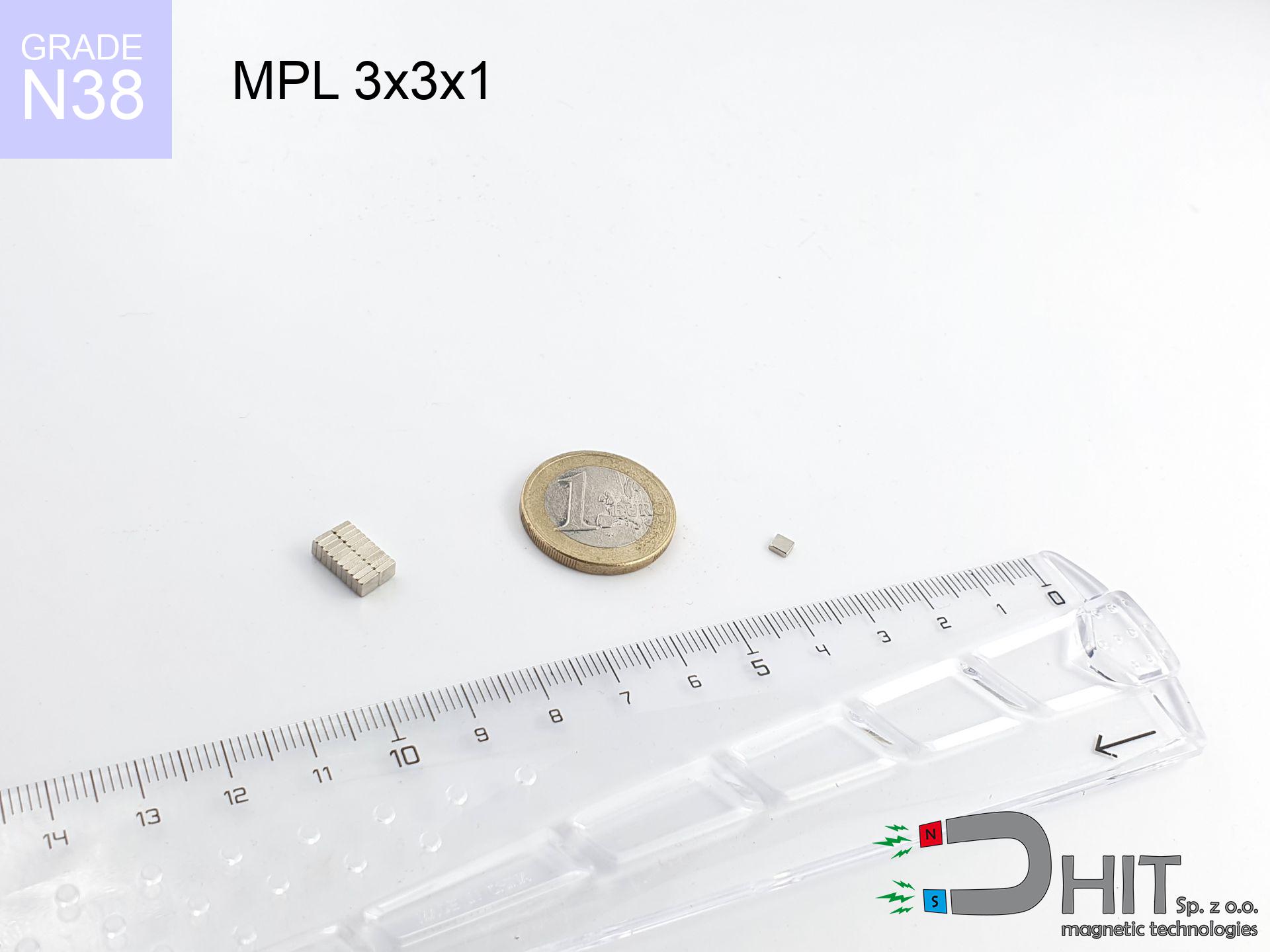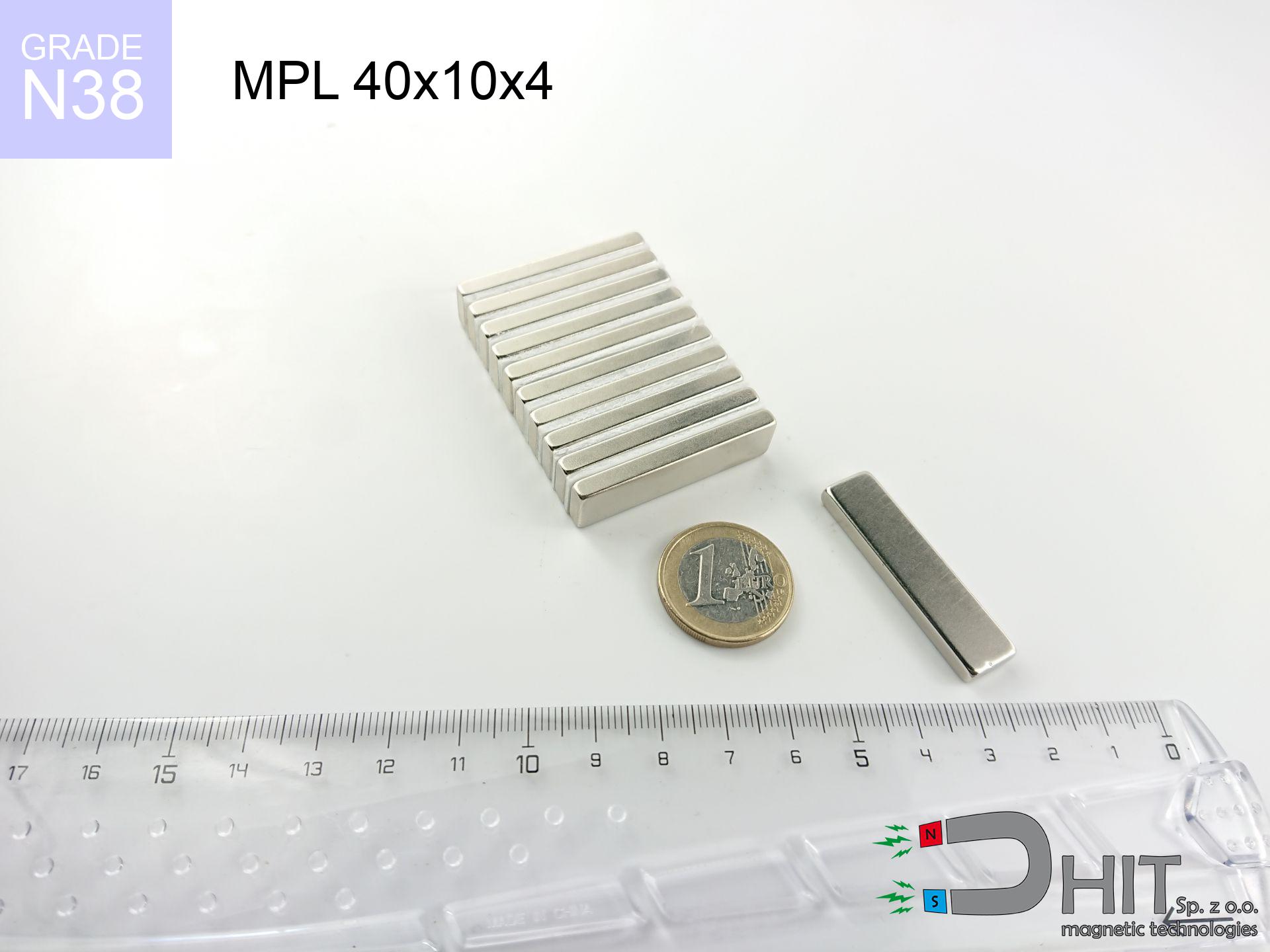SM 32x375 [2xM8] / N52 - magnetic separator
magnetic separator
Catalog no 130462
GTIN/EAN: 5906301813330
Diameter Ø
32 mm [±1 mm]
Height
375 mm [±1 mm]
Weight
2075 g
Magnetic Flux
~ 10 000 Gauss [±5%]
1193.10 ZŁ with VAT / pcs + price for transport
970.00 ZŁ net + 23% VAT / pcs
bulk discounts:
Need more?
Call us
+48 22 499 98 98
alternatively get in touch through
form
the contact page.
Weight and structure of magnets can be reviewed using our
magnetic calculator.
Orders submitted before 14:00 will be dispatched today!
Detailed specification - SM 32x375 [2xM8] / N52 - magnetic separator
Specification / characteristics - SM 32x375 [2xM8] / N52 - magnetic separator
| properties | values |
|---|---|
| Cat. no. | 130462 |
| GTIN/EAN | 5906301813330 |
| Production/Distribution | Dhit sp. z o.o. |
| Country of origin | Poland / China / Germany |
| Customs code | 85059029 |
| Diameter Ø | 32 mm [±1 mm] |
| Height | 375 mm [±1 mm] |
| Weight | 2075 g |
| Material Type | Stainless steel AISI 304 / A2 |
| Magnetic Flux | ~ 10 000 Gauss [±5%] |
| Size/Mount Quantity | 2xM8 |
| Polarity | circumferential - 14 poles |
| Casing Tube Thickness | 1 mm |
| Manufacturing Tolerance | ±1 mm |
Magnetic properties of material N52
| properties | values | units |
|---|---|---|
| remenance Br [min. - max.] ? | 14.2-14.7 | kGs |
| remenance Br [min. - max.] ? | 1420-1470 | mT |
| coercivity bHc ? | 10.8-12.5 | kOe |
| coercivity bHc ? | 860-995 | kA/m |
| actual internal force iHc | ≥ 12 | kOe |
| actual internal force iHc | ≥ 955 | kA/m |
| energy density [min. - max.] ? | 48-53 | BH max MGOe |
| energy density [min. - max.] ? | 380-422 | BH max KJ/m |
| max. temperature ? | ≤ 80 | °C |
Physical properties of sintered neodymium magnets Nd2Fe14B at 20°C
| properties | values | units |
|---|---|---|
| Vickers hardness | ≥550 | Hv |
| Density | ≥7.4 | g/cm3 |
| Curie Temperature TC | 312 - 380 | °C |
| Curie Temperature TF | 593 - 716 | °F |
| Specific resistance | 150 | μΩ⋅cm |
| Bending strength | 250 | MPa |
| Compressive strength | 1000~1100 | MPa |
| Thermal expansion parallel (∥) to orientation (M) | (3-4) x 10-6 | °C-1 |
| Thermal expansion perpendicular (⊥) to orientation (M) | -(1-3) x 10-6 | °C-1 |
| Young's modulus | 1.7 x 104 | kg/mm² |
Elemental analysis
| iron (Fe) | 64% – 68% |
| neodymium (Nd) | 29% – 32% |
| boron (B) | 1.1% – 1.2% |
| dysprosium (Dy) | 0.5% – 2.0% |
| coating (Ni-Cu-Ni) | < 0.05% |
Sustainability
| recyclability (EoL) | 100% |
| recycled raw materials | ~10% (pre-cons) |
| carbon footprint | low / zredukowany |
| waste code (EWC) | 16 02 16 |
View more products
Pros and cons of rare earth magnets.
Advantages
- They retain attractive force for around ten years – the loss is just ~1% (according to analyses),
- They show high resistance to demagnetization induced by presence of other magnetic fields,
- Thanks to the reflective finish, the plating of nickel, gold-plated, or silver-plated gives an visually attractive appearance,
- They feature high magnetic induction at the operating surface, making them more effective,
- Thanks to resistance to high temperature, they are able to function (depending on the shape) even at temperatures up to 230°C and higher...
- Due to the option of flexible molding and customization to specialized projects, neodymium magnets can be produced in a broad palette of geometric configurations, which increases their versatility,
- Wide application in electronics industry – they serve a role in HDD drives, brushless drives, advanced medical instruments, also multitasking production systems.
- Thanks to concentrated force, small magnets offer high operating force, in miniature format,
Limitations
- To avoid cracks under impact, we recommend using special steel housings. Such a solution protects the magnet and simultaneously improves its durability.
- When exposed to high temperature, neodymium magnets experience a drop in force. Often, when the temperature exceeds 80°C, their strength decreases (depending on the size and shape of the magnet). For those who need magnets for extreme conditions, we offer [AH] versions withstanding up to 230°C
- They rust in a humid environment - during use outdoors we advise using waterproof magnets e.g. in rubber, plastic
- Due to limitations in realizing nuts and complicated shapes in magnets, we recommend using a housing - magnetic holder.
- Potential hazard related to microscopic parts of magnets are risky, when accidentally swallowed, which becomes key in the context of child health protection. Additionally, tiny parts of these products can complicate diagnosis medical in case of swallowing.
- Higher cost of purchase is a significant factor to consider compared to ceramic magnets, especially in budget applications
Lifting parameters
Magnetic strength at its maximum – what affects it?
- with the contact of a yoke made of special test steel, ensuring maximum field concentration
- whose transverse dimension is min. 10 mm
- with a surface free of scratches
- with zero gap (without coatings)
- for force applied at a right angle (pull-off, not shear)
- in stable room temperature
Determinants of lifting force in real conditions
- Space between surfaces – even a fraction of a millimeter of distance (caused e.g. by veneer or unevenness) diminishes the pulling force, often by half at just 0.5 mm.
- Pull-off angle – note that the magnet holds strongest perpendicularly. Under sliding down, the holding force drops significantly, often to levels of 20-30% of the nominal value.
- Base massiveness – insufficiently thick plate causes magnetic saturation, causing part of the flux to be lost into the air.
- Steel type – low-carbon steel attracts best. Higher carbon content decrease magnetic properties and lifting capacity.
- Surface condition – smooth surfaces ensure maximum contact, which improves force. Uneven metal weaken the grip.
- Temperature influence – hot environment reduces magnetic field. Exceeding the limit temperature can permanently damage the magnet.
Lifting capacity testing was carried out on a smooth plate of optimal thickness, under a perpendicular pulling force, whereas under parallel forces the holding force is lower. Additionally, even a minimal clearance between the magnet and the plate reduces the holding force.
Safety rules for work with NdFeB magnets
Medical implants
Patients with a heart stimulator must keep an large gap from magnets. The magnetism can interfere with the functioning of the implant.
Do not overheat magnets
Standard neodymium magnets (grade N) undergo demagnetization when the temperature surpasses 80°C. This process is irreversible.
Choking Hazard
These products are not toys. Swallowing several magnets can lead to them attracting across intestines, which constitutes a direct threat to life and necessitates urgent medical intervention.
Keep away from electronics
Remember: rare earth magnets produce a field that disrupts precision electronics. Keep a separation from your phone, tablet, and GPS.
Dust explosion hazard
Machining of neodymium magnets poses a fire risk. Magnetic powder oxidizes rapidly with oxygen and is hard to extinguish.
Beware of splinters
Despite the nickel coating, neodymium is brittle and not impact-resistant. Do not hit, as the magnet may crumble into hazardous fragments.
Warning for allergy sufferers
Nickel alert: The nickel-copper-nickel coating contains nickel. If an allergic reaction appears, immediately stop working with magnets and wear gloves.
Keep away from computers
Do not bring magnets near a purse, computer, or TV. The magnetism can irreversibly ruin these devices and wipe information from cards.
Safe operation
Before starting, read the rules. Uncontrolled attraction can destroy the magnet or hurt your hand. Be predictive.
Bone fractures
Protect your hands. Two powerful magnets will join instantly with a force of massive weight, crushing everything in their path. Be careful!

![Magnetic bar SM 32x375 [2xM8] / N52 Magnetic bar SM 32x375 [2xM8] / N52](https://cdn3.dhit.pl/graphics/banners/magnet.webp)
![SM 32x375 [2xM8] / N52 - magnetic separator](https://cdn3.dhit.pl/graphics/products/sm-32x375-2xm8-mif.jpg)

![SM 32x175 [2xM8] / N42 - magnetic separator SM 32x175 [2xM8] / N42 - magnetic separator](https://cdn3.dhit.pl/graphics/products/sm-32x175-2xm8-tej.jpg)

![SM 18x100 [2xM5] / N42 - magnetic separator SM 18x100 [2xM5] / N42 - magnetic separator](https://cdn3.dhit.pl/graphics/products/sm-18x100-2xm5-pem.jpg)

